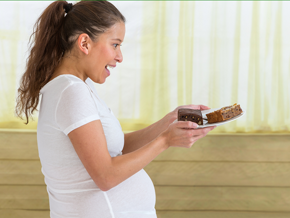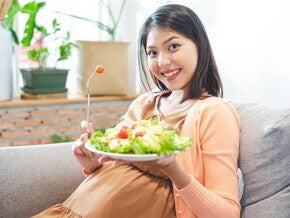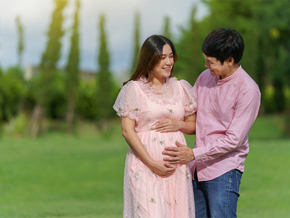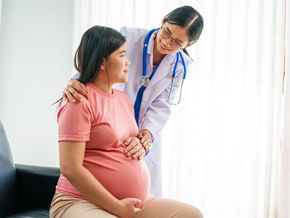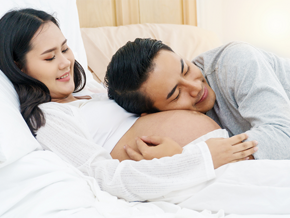
If you’re pregnant, your OB has probably mentioned how important iron is. They’re right, as usual. Iron works hard behind the scenes to keep everything running smoothly. It keeps your energy up, supports your little one’s growth, and helps you avoid that drained, dizzy feeling you get when your iron levels are low.
Iron carries oxygen in your blood so you—and your baby—can stay energized and healthy. If you don’t get enough, you might feel more tired, nauseous, or even develop anemia.
According to the Journal of Pregnancy, iron deficiency is one of the most common nutritional concerns among pregnant women, especially in developing countries like the Philippines. The good news is that you can feel stronger and more recharged just by knowing which iron-rich foods to eat.
How Much Iron Do You Need During Pregnancy?
When you’re pregnant, you need more iron, especially in the second and third trimesters when your blood volume expands and your baby’s iron stores start building up. Based on the Philippine Dietary References Intake, the recommended intake of iron for pregnant women is 38 mg daily. This includes heme iron (found in animal-based foods) and non-heme iron (found in plant-based sources). Heme iron is more easily absorbed by the body, but both forms are beneficial.
Top 10 Iron-Rich Foods for Pregnancy
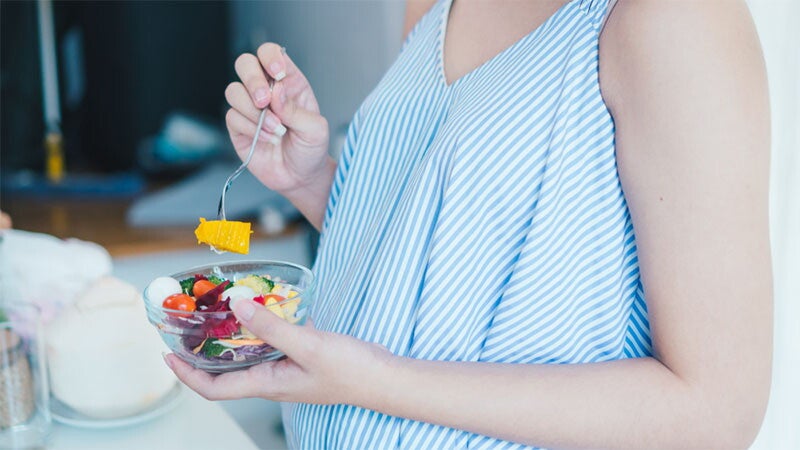
Knowing which foods are rich in iron is important for all pregnant women.
Want to feel less drained and more recharged during your pregnancy? Add these foods to your shopping list. These are easy to find, mom-approved, and packed with nutrients!
1. Chicken liver (9 mg per 100 g)
Rich in heme iron, chicken liver is one of the most concentrated sources of iron available. It also contains vitamin A and folate, making it especially helpful during pregnancy. Try sautéing it with onions and garlic or adding it to afritada or menudo for a comforting, iron-rich meal.
Just eat chicken liver in moderation. The British Journal of Nutrition warns that excessive intake of preformed vitamin A (like that found in liver) during pregnancy may increase the risk of birth defects. Balance is key!
2. Lean red meat (2.7 mg per 100 g)
Red meat is a top source of heme iron, which your body absorbs more efficiently than plant-based iron. Dishes like beef tapa, bistek Tagalog, or sinigang na baka can help you meet your iron needs and are easy to prep, too. To prevent indigestion, opt for leaner cuts and don’t forget to tenderize!
3. Malunggay leaves (3 mg per cup, cooked)
Also known as moringa, malunggay is a superfood rich in non-heme iron and folic acid. It's a great plant-based option to support red blood cell production. Add malunggay to tinola, munggo, or rice dishes, or blend it into smoothies with fruit.
4. Tofu (3.6 mg per 1/2 cup)
Tofu is a great plant-based source of non-heme iron and protein. It’s also low in fat and easy to cook. Slice firm tofu into cubes and pan-fry until golden, or toss into adobo, sinigang, or stir-fried veggie dishes. It absorbs flavor well, making it an easy addition to many meals.
5. Sardines (2.9 mg per 100 g)
Sardines provide heme iron and are rich in omega-3 fatty acids, which help with fetal brain development. Canned sardines in tomato sauce are convenient and budget friendly. Eat them with rice, mash them into a sandwich spread, or add them to an omelet for a quick, nourishing dish.
6. Dried fruits (1-2 mg per handful)
Raisins, prunes, and dates contain non-heme iron and make for easy, portable snacks. They’re also high in fiber, which can help ease pregnancy-related constipation. Mix dried fruits into oatmeal or trail mix or enjoy with a handful of nuts for a balanced merienda. However, dried fruits are also high in sugar, so watch your glucose levels and eat them in moderation.
7. Fortified cereals (up to 18 mg per serving)
These cereals are designed to help fill common nutrient gaps, including iron. Many are also fortified with folic acid. Choose varieties with less sugar and pair them with vitamin C-rich fruits like oranges or strawberries to boost iron absorption. Avoid pairing with dairy to prevent interference with iron intake.
8. Spinach (3.2 mg per 1/2 cup, cooked)
Spinach is a green powerhouse packed with non-heme iron, folic acid, and fiber. Sauté it with garlic, stir it into eggs, or blend it into pasta sauces. Cooking it down helps your body absorb more iron and pairing it with citrus boosts its impact even more.
9. Pumpkin seeds (2.7 mg per ounce)
These small but mighty seeds are rich in non-heme iron, magnesium, and healthy fats. Roast them with a pinch of salt for a crunchy snack or add them to rice bowls, smoothies, or homemade granola for a nutrient boost.
10. Beans (2–3 mg per 1/2 cup)
Beans are a plant-based source of iron and an excellent addition to a high-fiber diet. Cook munggo with malunggay, serve black beans with rice, or blend chickpeas into hummus. Add a squeeze of calamansi or serve alongside tomatoes to help your body absorb the iron more effectively.
Iron-Rich Foods for Anemia During Pregnancy
Has your OB diagnosed you with low iron or anemia? These foods rich in iron and folic acid pack a double punch!
- Malunggay and spinach
- Fortified grains and cereals
- Eggs
A Philippine Journal of Nutrition study found that combining iron and folate-rich foods significantly improved hemoglobin levels in pregnant women over a three-month period.
How to Maximize Iron Absorption
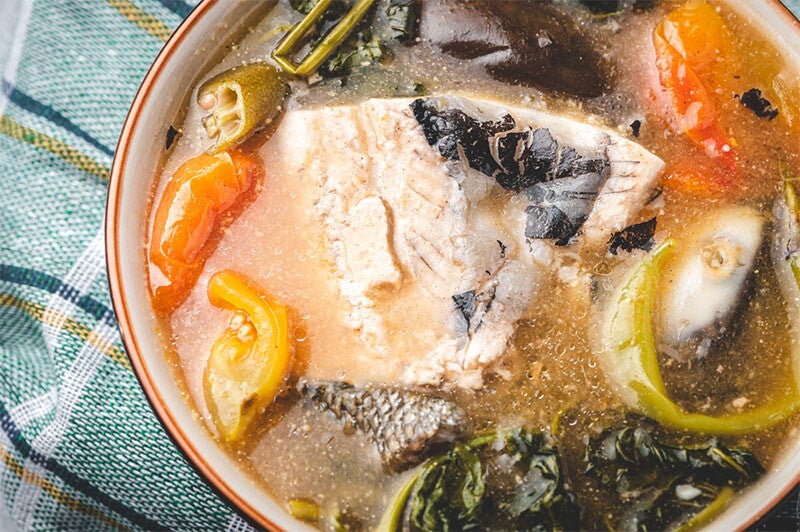
Adding a squeeze of lemon to your sinigang makes it easier for your body to absorb vitamin C.
Even if you’re eating iron foods for pregnancy regularly, your body may not absorb all of it, especially if you unknowingly pair iron with ingredients that block its absorption. Non-heme iron, the type found in plant foods, is particularly sensitive to calcium, caffeine, and certain grains.
So how do you make sure you’re absorbing iron? A study in Nutrition Reviews says a combination of vitamin C, animal protein, and beta-carotene could work.
Pair iron with vitamin C
Vitamin C (ascorbic acid) helps convert iron into a form your body can easily absorb. Squeeze calamansi on munggo or use it for added asim in your sinigang.
Eat more animal-based protein
For an added iron boost, pair your plant-based heme iron foods with chicken, beef or fish. Go ahead and add spinach to your arroz ala cubana, or add eggs to your sardines with rice and greens.
Add vitamin A and beta-carotene
Found in foods like carrots, squash, and malunggay, these nutrients support red blood cell production and iron metabolism.
Avoid calcium-rich foods during iron-heavy meals
Save milk, cheese, or supplements for another time. Calcium competes with iron and may reduce how much your body takes in. A study published in the American Journal of Clinical Nutrition found that calcium significantly reduces iron absorption when consumed in the same meal, particularly for non-heme iron.
Support gut health with probiotics
A healthy gut is better at absorbing nutrients. Fermented foods like yogurt, kimchi, and atchara can improve your digestive system and help your body absorb iron better.
Take your iron supplements at the right time
If you’re taking iron pills, do so on an empty stomach (at least an hour before or two hours after a meal), unless your doctor advises otherwise.
Limit iron blockers like tea and coffee during meals
These contain polyphenols and caffeine, which may decrease absorption. Enjoy your morning kape a few hours after your meal instead.
These practical changes can help your body make the most out of the iron you eat, especially when you’re trying to boost your levels during pregnancy.
FAQs on Iron and Pregnancy Diet
Should I take iron supplements?
Always talk to your doctor first. They’ll help you find the right type and dosage based on your trimester and blood work. Avoid self-medicating.
If you’re still feeling tired, lightheaded, or your OB detects low hemoglobin levels, iron supplements may be necessary. Some supplements can cause constipation, so don’t forget to drink lots of water and add fiber-rich foods to your diet.
Is it safe to take calcium and iron supplements at the same time?
Health experts typically recommend avoiding taking calcium and iron supplements together, since calcium can interfere with iron absorption. If you've been prescribed both, follow your doctor's prescription about when to take your supplements.
How can I increase my iron levels during pregnancy?
Eat more iron foods for pregnancy like beef, chicken liver, leafy greens, and iron-fortified cereals. Pair with vitamin C for better absorption. Your doctor may also prescribe iron supplements to help boost iron.
What are signs of low iron during pregnancy?
Fatigue, pale skin, shortness of breath, dizziness, and brittle nails. If you’re concerned, talk to your OB and get a blood test to confirm.
Keeping your energy up during pregnancy is hard enough, but a healthy diet packed with iron-rich foods can make a huge difference. With just a few smart choices, you can help prevent anemia and make sure your baby is getting all the nutrients they need.
References
Rothman, K.J., Moore, L.L., Singer, M.R., Nguyen, U.S., Mannino, S., & Milunsky, A. (1995). Teratogenicity of high vitamin A intake. British Journal of Nutrition, 73(6), 843–852. https://doi.org/10.1079/bjn19950089
Hallberg, L., Brune, M., & Rossander, L. (1991). The role of calcium in iron absorption. American Journal of Clinical Nutrition, 53(1), 112-119. https://doi.org/10.3945/jn.108.096834
Peña-Rosas, J.P., & Viteri, F.E. (2009). Effects and safety of preventive oral iron or iron+folic acid supplementation for women during pregnancy. Journal of Nutrition, 139(8), 1561S–1567S. https://doi.org/10.3945/jn.108.096834
Angeles-Agdeppa, I., & Takanashi, K. (2015). In-home fortification of meals with iron-containing sprinkles improves iron status among young children in the Philippines: a cluster randomized trial. Philippine Journal of Nutrition, 62(1), 11–20.
World Health Organization. (2012). Guideline: Daily iron and folic acid supplementation in pregnant women. https://www.who.int/publications/i/item/9789241501996














